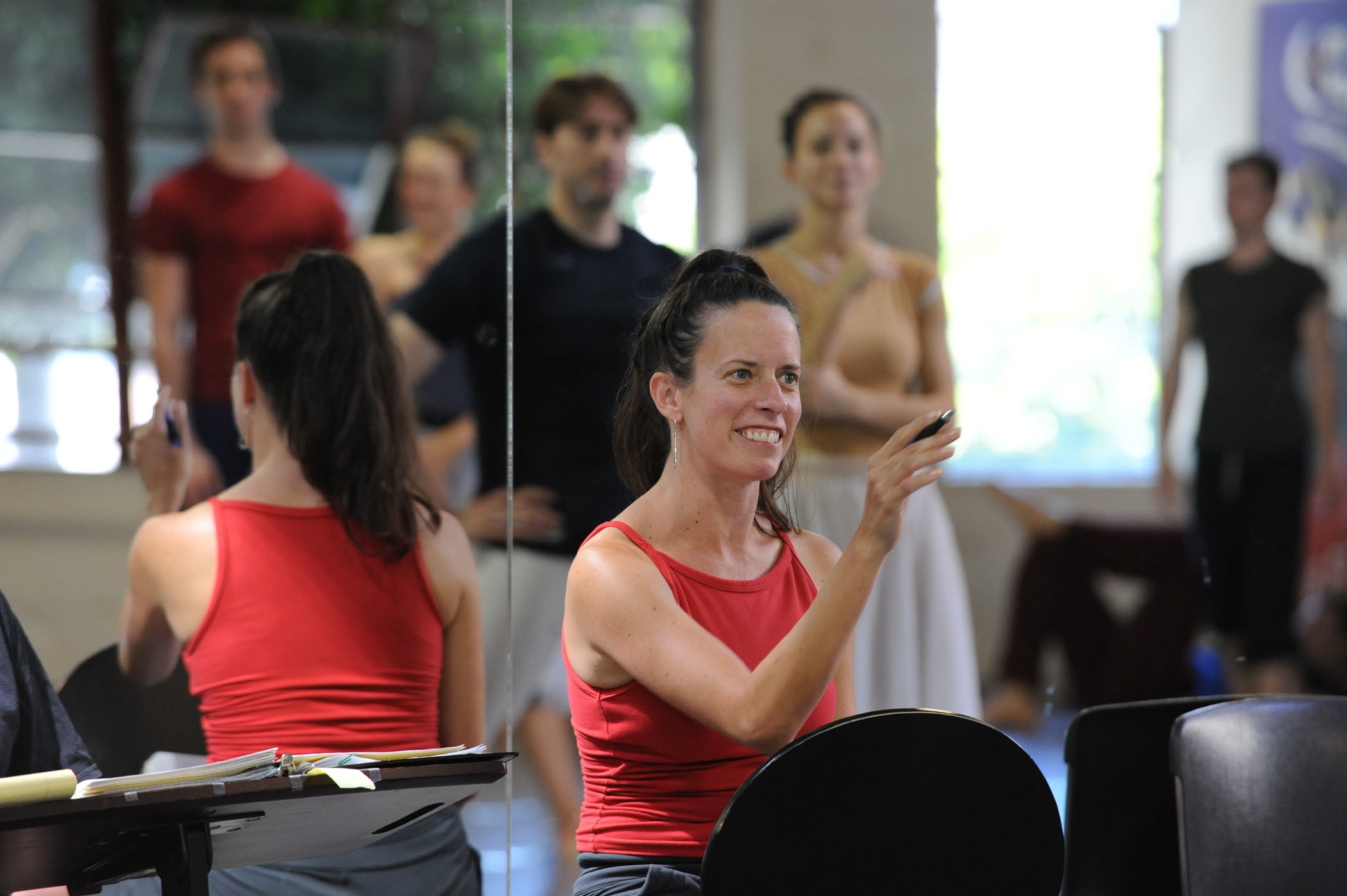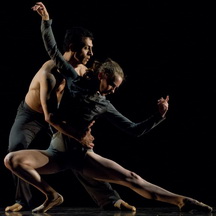
Discovering new territory
It was almost three years ago that the Smuin Ballet lost its founder, choreographer and artistic director Michael Smuin, to a heart attack. Despite the shock and grief caused by his death, the company continued to perform, firmly basing its programs on Smuin repertory. But clear from the onset was that the company would need to reshape itself in order to continue as a vital force in the Bay Area and among national dance companies.
Part of that reshaping is the work of Choreographer-in-Residence Amy Seiwert. According to Seiwert, Smuin had begun to evolve the company so that the repertory was more diverse in its choreography. “I remember him talking about his plan for the fall season the following year. He wanted me to do a new ballet; he wanted to bring in a ballet by Kirk Peterson, a wonderful choreographer who danced for Michael at SF Ballet. And I said, ‘Michael, there’s only one of your ballets.’ And he said, ‘Yes.’”
Smuin supported the young dancer efforts to become a choreographer through the company’s Protégé Program, a program that gave company dancers the opportunity to work as choreographers with the members of the company and the technical crew. Smuin was a generous mentor, encouraging Seiwert to develop her own vision as a choreographer. “About five years ago, my 93-year-old grandmother told me I should be more like Michael,” tells Seiwert, “I told him that and he just started to laugh. He said, ‘You know you are doing pretty well just being like you.’”
… and new talent
Seiwert’s choreographic art is very different from Michael Smuin’s. “I’m sure it’s a bit generational just in terms of our influences.” But she is quick to point out their similarities: “We are both insanely musical; we both read music and play music. We come from a similar place, but our aesthetics are very different.”
The dances Michael Smuin created were always romantic, based on the imagery of love and sexuality, with large, sweeping gestures that bordered on the showy. They are often fun and invariably accessible. This February, however, the company is presenting Smuin’s Medea, a darker theatrical ballet set to a suite from Samuel Barber’s Medea, originally composed for Martha Graham’s 1946 ballet. It’s “a brilliant ballet in terms of telling a story, which Michael was great at,” says Seiwert. “When I joined Smuin Ballet in the 1999-2000 season, it was restaged … I was sitting offstage, watching, and I have never been so proud to be in a company. There were only two women dancing, and it was such a beautiful dramatic heart-wrenching moment.”
As a choreographer, Seiwert is concerned with physicality in a more abstract way; she is interested in the dancer’s physical application of her steps: “the actual physics and how that unfolds in a very mathematical way … when you pair that with music, which is also mathematical, you have a geometry of physical movement … you can create images in that way.” There is in all of Seiwert’s choreography a considered and elegantly realized play with the body in space.
The Smuin Ballet’s February program includes Seiwert’s Soon These Two Worlds, a ballet set to music that was commissioned from African composers by the Kronos Quartet. The music was released in a CD called Pieces of Africa in 1992. “I was intimidated by the music; I didn’t want it to look like Smuin Ballet dancers were trying to be African dancers.” To avoid that pitfall, Seiwert took a lot of West African dance classes. “I wasn’t trying to learn the dances so much as the rhythms, trying to find where they intersect with ballet, but what I came away with was this amazing sense of community. They were like church.”
And how was she able to recreate this sense of community? “Hours and hours of rehearsal.” With the company dancers, she translated the images the music created in her head. “I always look at the dancers as collaborators: their input, their bodies, what their natural strengths and weaknesses are … If there were any other than these 12 dancers the piece would have been different … It’s like when an artist works with clay versus oil versus watercolor. Those dancers are everything I hold onto.”
Both Seiwert and the dancers of the company are committed to maintaining Michael Smuin’s legacy, but the company is moving into new territory. Because the company is small—16 dancers—Michael Smuin’s influence was deep and crucial, but with such excellent and tender choreographers like Seiwert, the company’s future looks brighter and richer than anyone might have imagined three years ago in April.
The third piece on the February program is Smuin’s “Fly Me to the Moon,” his sunny and romantic piece set to Frank Sinatra songs.
—Jaime Robles
Originally published in the Piedmont Post
Photo: Amy Seiwert in rehearsal with the Smuin Ballet.
Smuin Ballet presents their winter concert at the following dates and venues: Friday, February 5, 8 p.m.; Saturday, February 6, 2 p.m. and 8 p.m. Lesher Center for the Arts,1601 Civic Dr., Walnut Creek. For tickets, call (925) 943-7469 or visit www.smuinballet.org.
Wednesday–Friday, February 24–26, 8 p.m.; Saturday, February 27, 2 p.m. and 8 p.m.; Sunday, February 28, 2 p.m. Mountain View Center for the Performing Arts, 500 Castro St., Mountain View. For tickets, call (650) 903-6000 or visit www.smuinballet.org.
Friday, March 5, 8 p.m.; Saturday, March 6, 2 p.m. and 8 p.m. Sunset Center, San Carlos Street between 8 and 10 Streets, Carmel. For tickets, call (831) 620-2048 or visit www.smuinballet.org.
